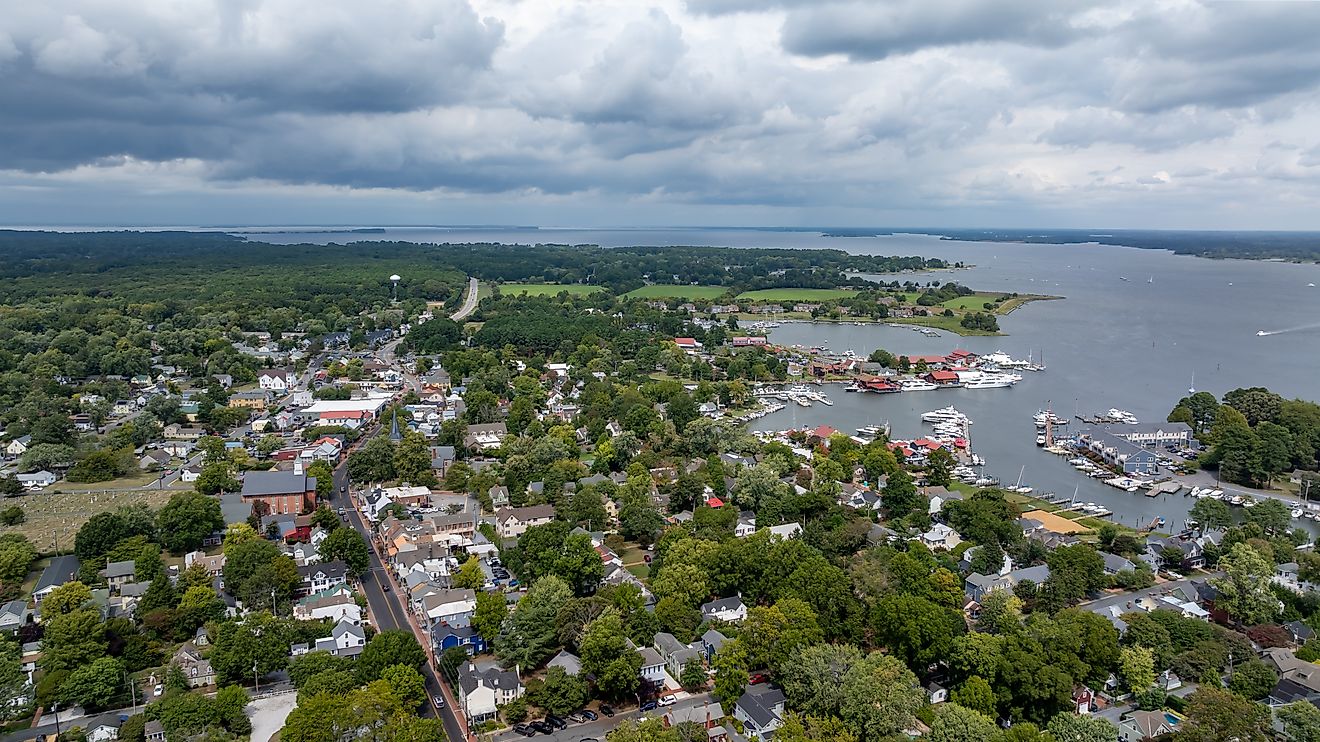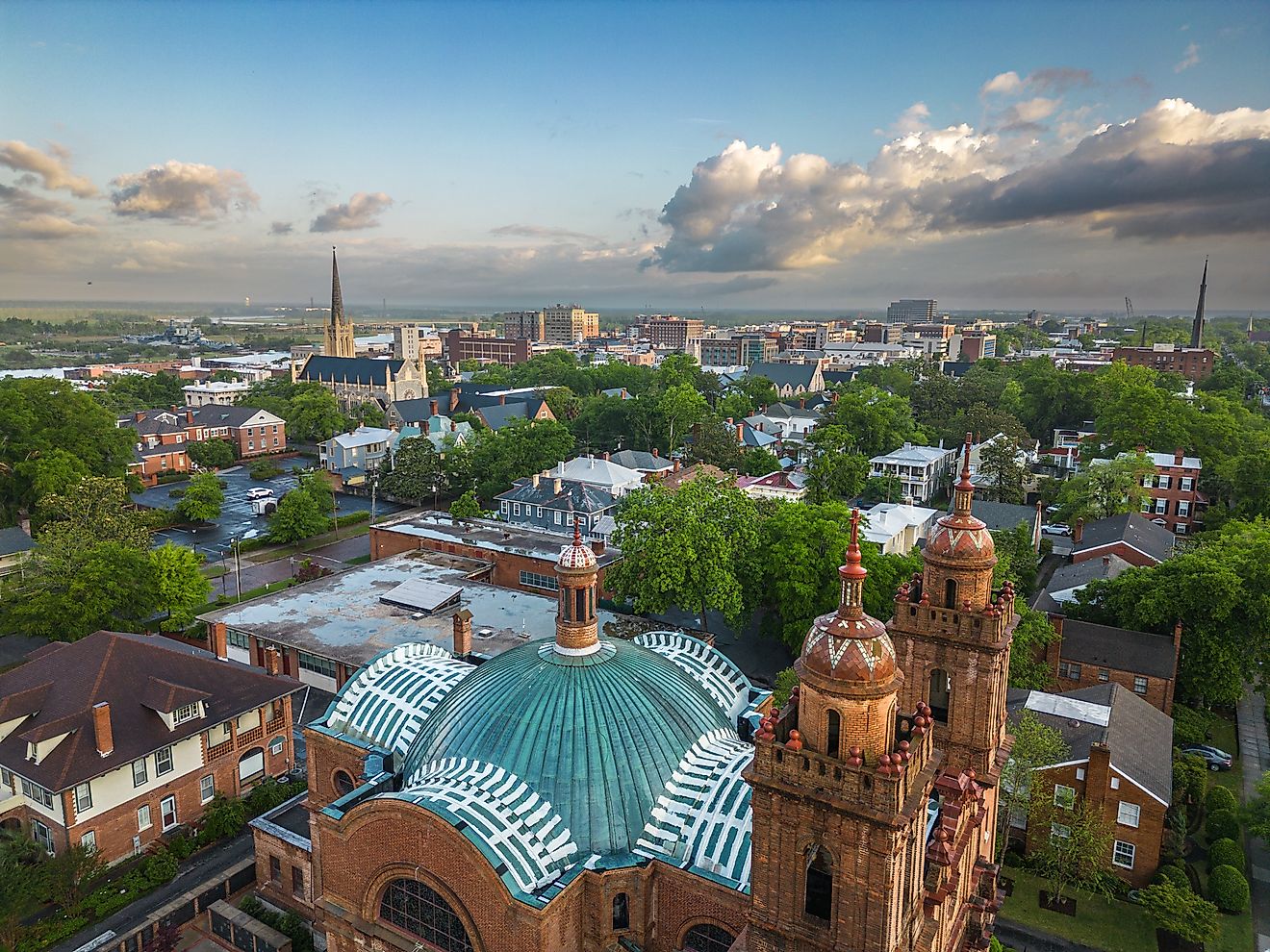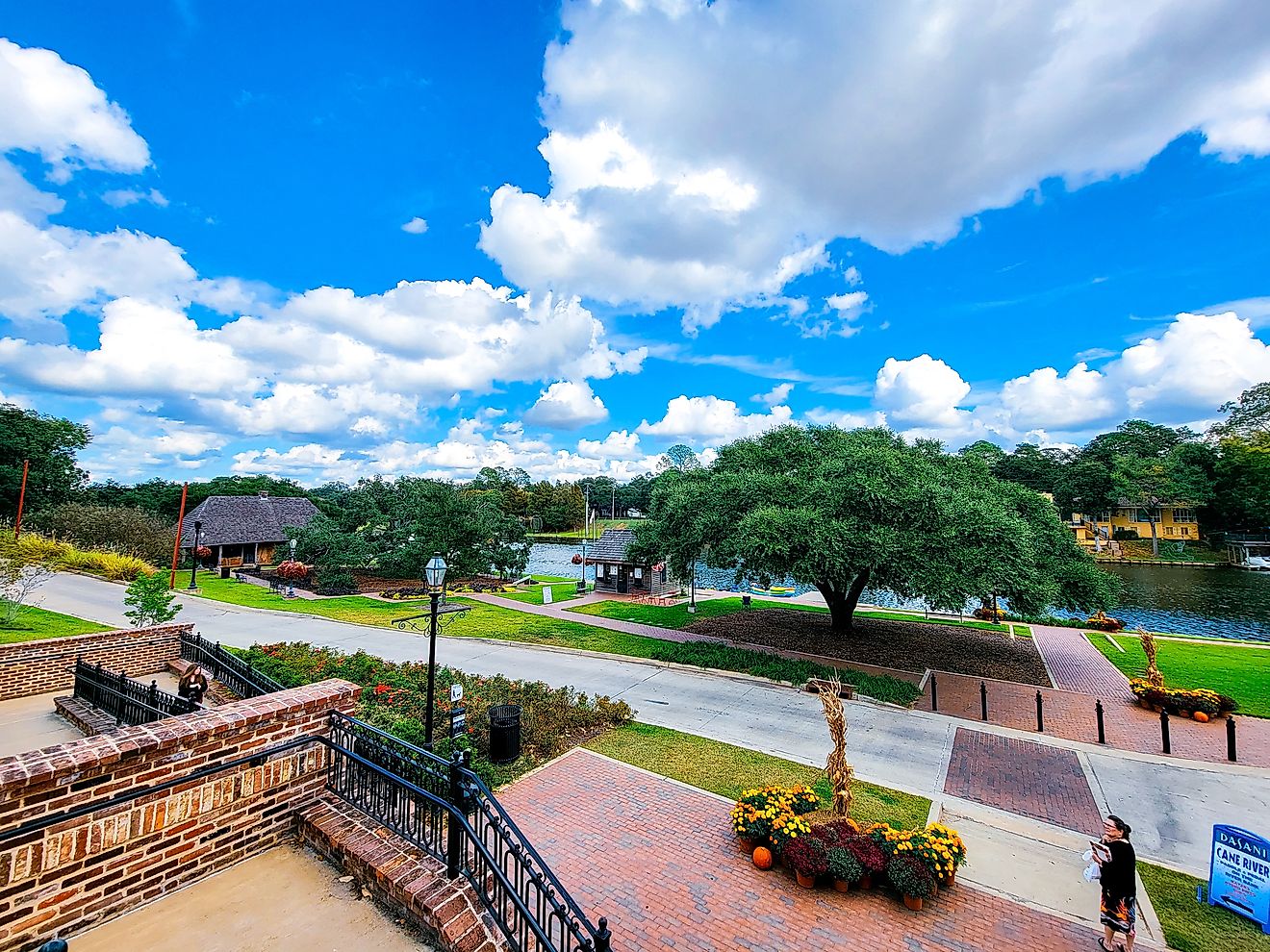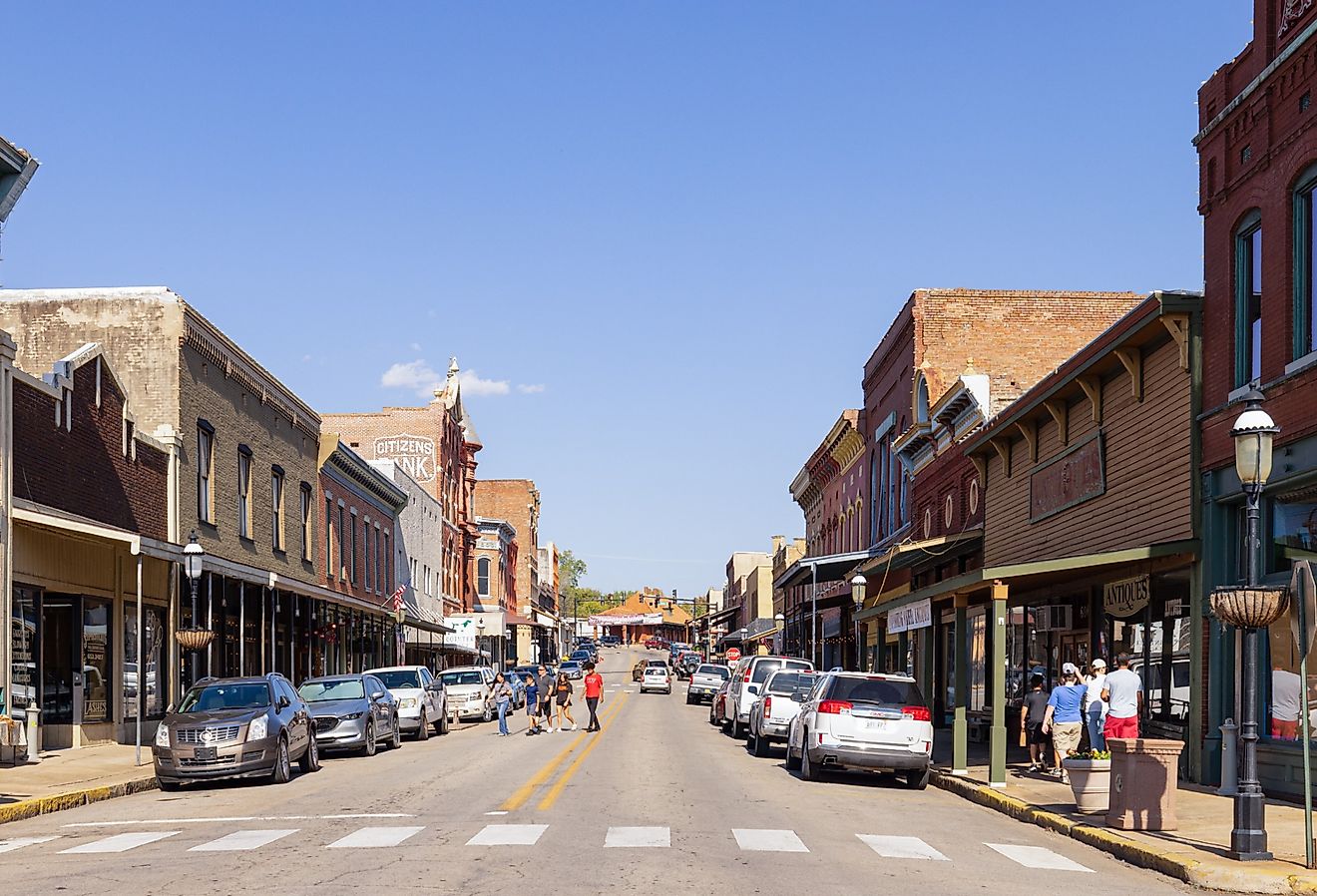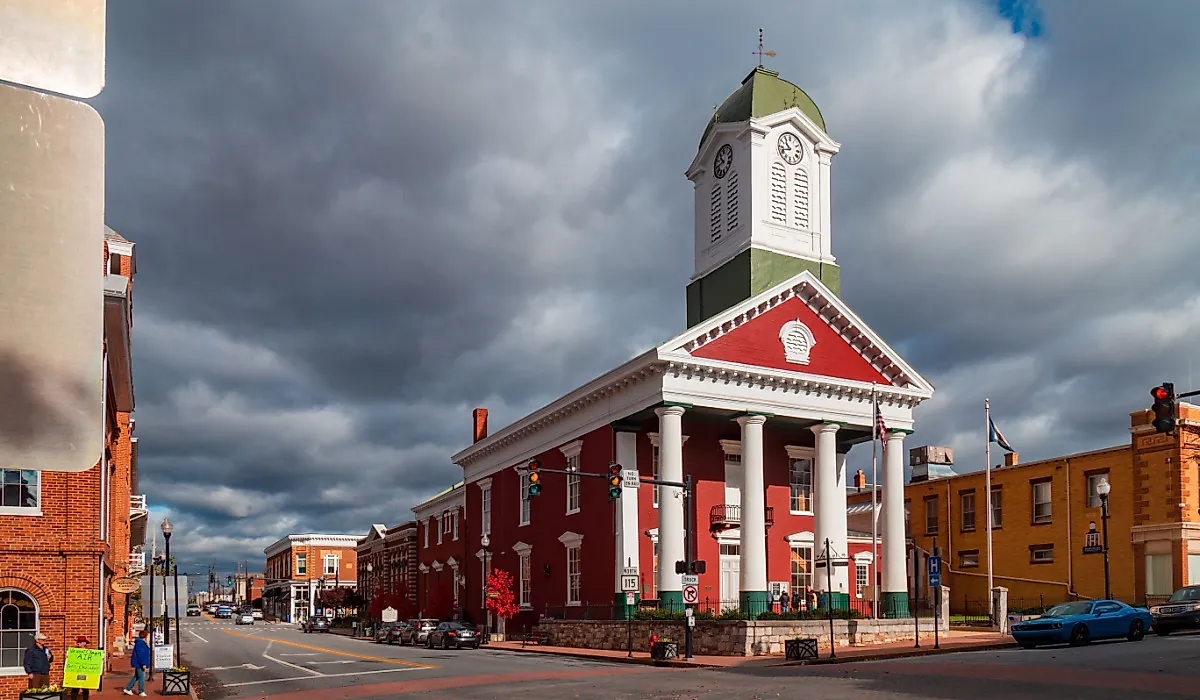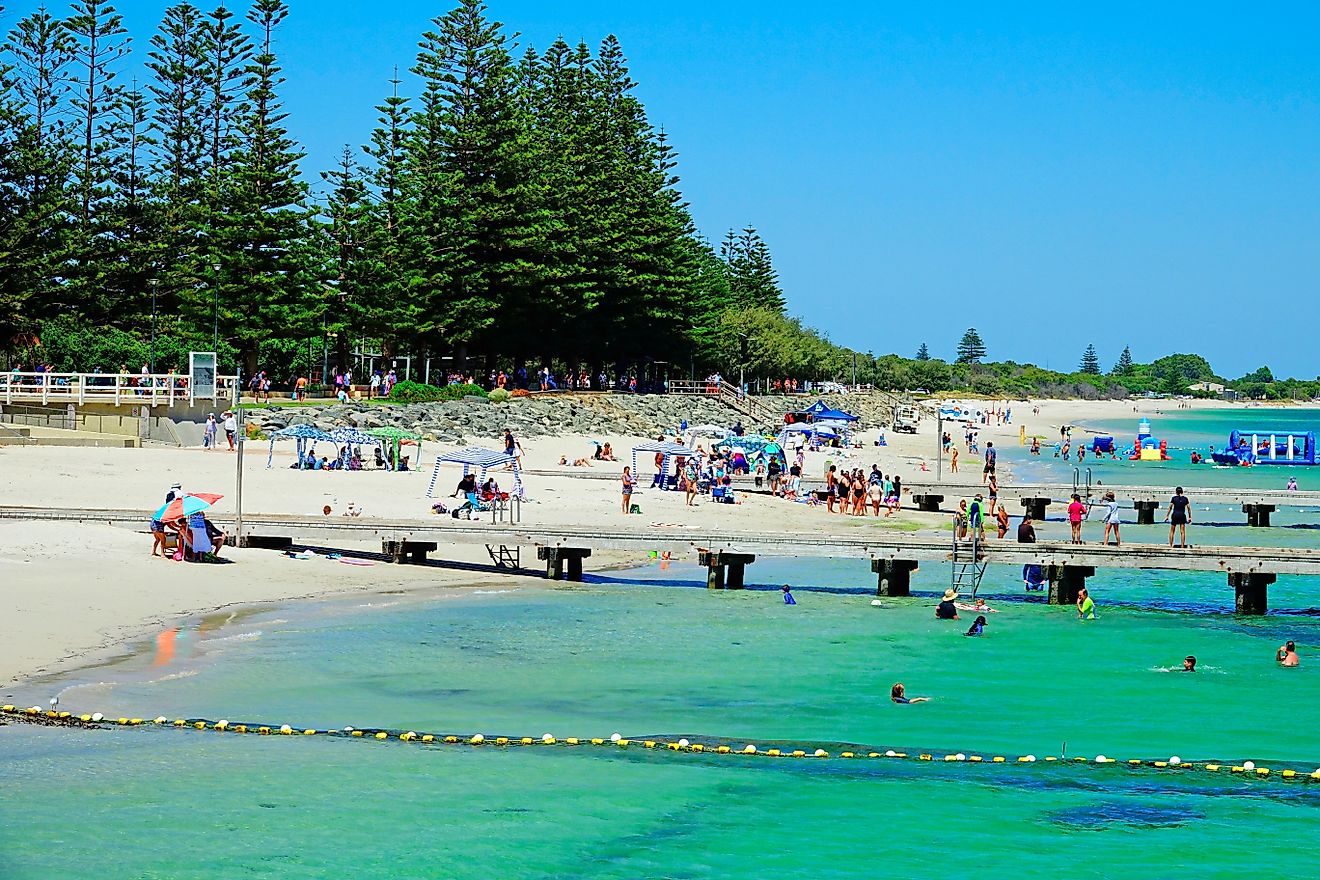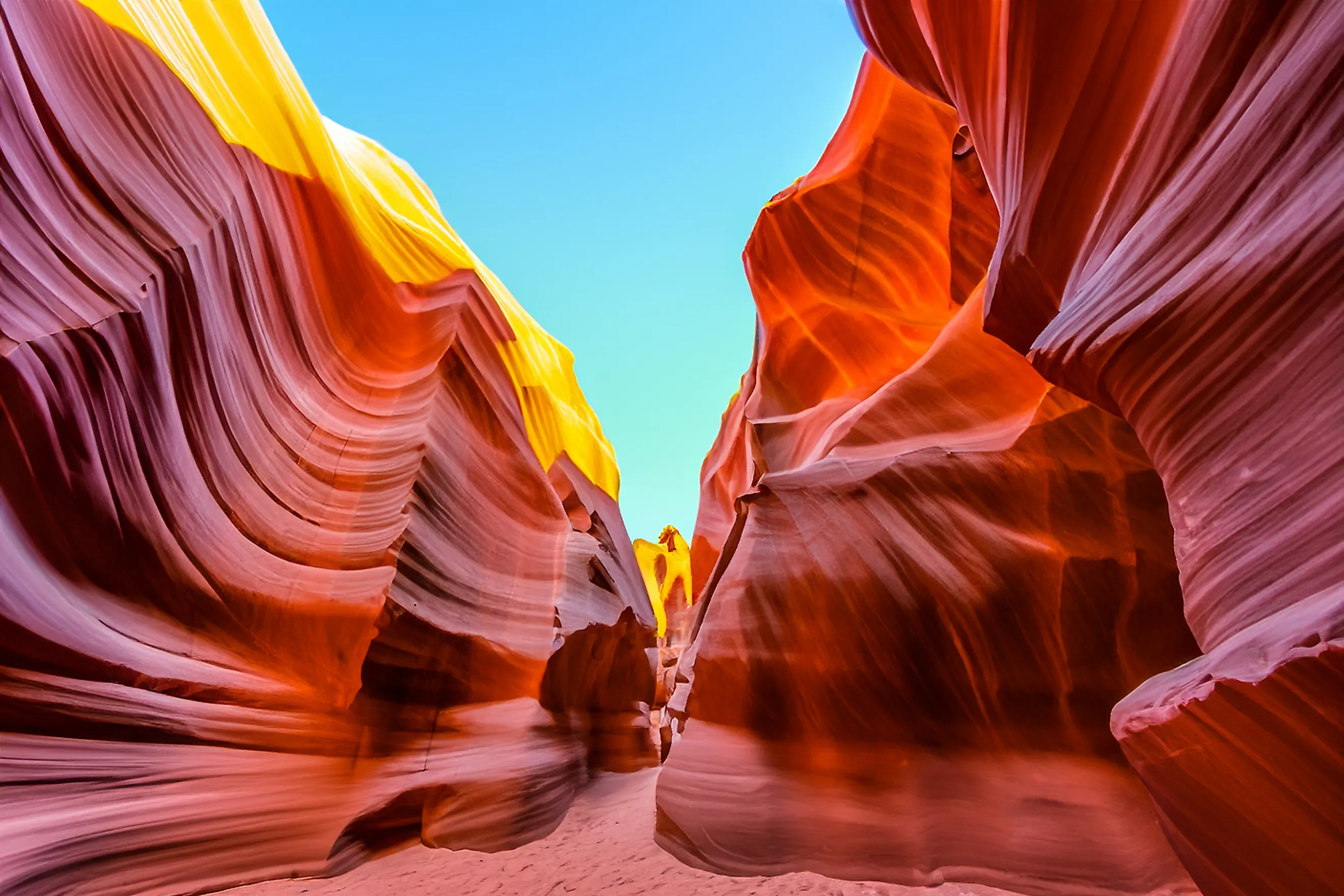
7 Best Attractions To Visit In Arizona
Arizona is a land of striking contrasts, where desert landscapes meet towering cliffs and timeless history. From the awe-inspiring depths of the Grand Canyon to the sculpted beauty of Antelope Canyon and the cultural treasures of Monument Valley, every corner tells a story. Whether you are chasing sunsets, exploring ancient rock formations, or marveling at modern engineering, here are the seven attractions that showcase the very best of the Grand Canyon State.
Grand Canyon National Park
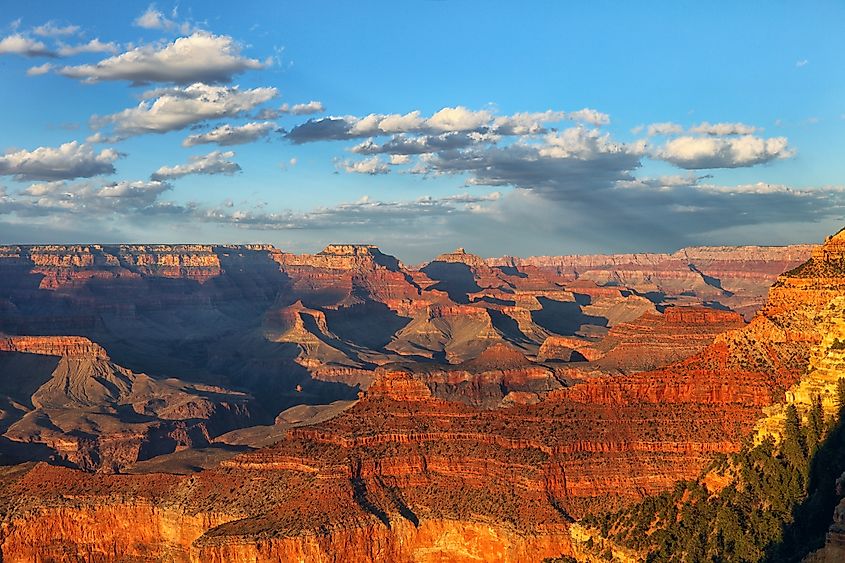
Grand Canyon National Park, the 15th site designated in the United States, protects one of the world’s most breathtaking landscapes. Carved by the Colorado River, the immense gorge reveals colorful rock layers stretching back to the Precambrian age. Spanning over 1.2 million acres across Coconino and Mohave counties, the park welcomes millions of visitors each year and has held UNESCO World Heritage status since 1979. Its creation in 1919 marked a milestone for the conservation movement, preserving a natural wonder once threatened by dam proposals.
Visitors can explore the South Rim—home to Grand Canyon Village, historic lodges like El Tovar and Bright Angel, and accessible scenic drives—and the more remote North Rim, where overlooks and trails provide quieter experiences. Either way, the views are iconic and the memories unforgettable.
Antelope Canyon
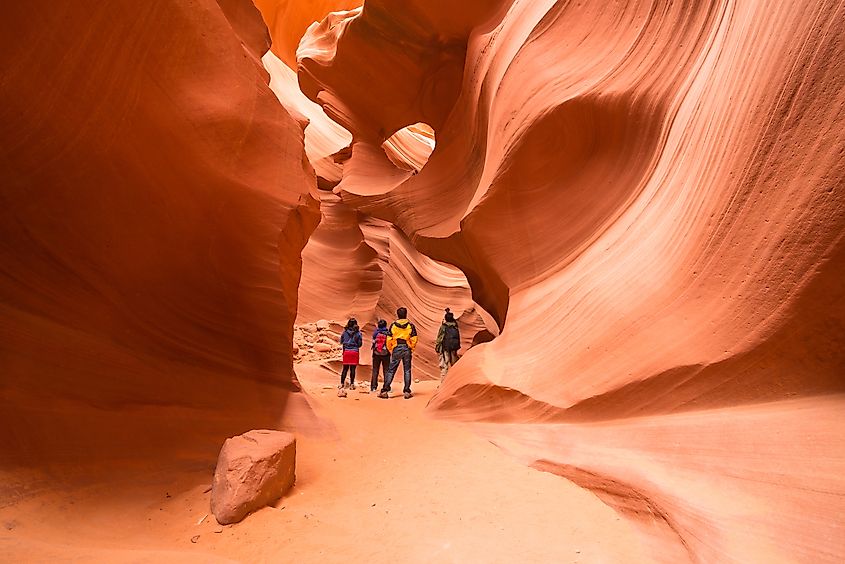
Antelope Canyon in Navajo territory near LeChee is among the Southwest’s most photographed natural wonders. Part of Lake Powell Navajo Tribal Park, the canyon features multiple sections, including Upper Antelope Canyon, known as Tsébighanilini or “the place where water runs through rocks,” and Lower Antelope Canyon, called Hasdez’ twazi’, or “spiral role arches.” Formed by centuries of flash flooding and erosion in the sandstone, its sculpted walls and flowing shapes glow with shifting light beams, most dramatic in summer when sun rays cut through narrow openings. Accessible by Navajo-guided tours, these passageways reveal a dreamlike world where smooth, twisting corridors rise like stone cathedrals.
Upper Antelope Canyon, with its level entrance and radiant shafts of light, is the most popular with visitors. Lower Antelope, by contrast, is narrower and steeper, requiring stairways and a more challenging climb, yet rewarding photographers with striking colors and dramatic formations. Together, these canyons stand as a cultural treasure of the Navajo Nation and one of Arizona’s most unforgettable destinations.
Taliesin West
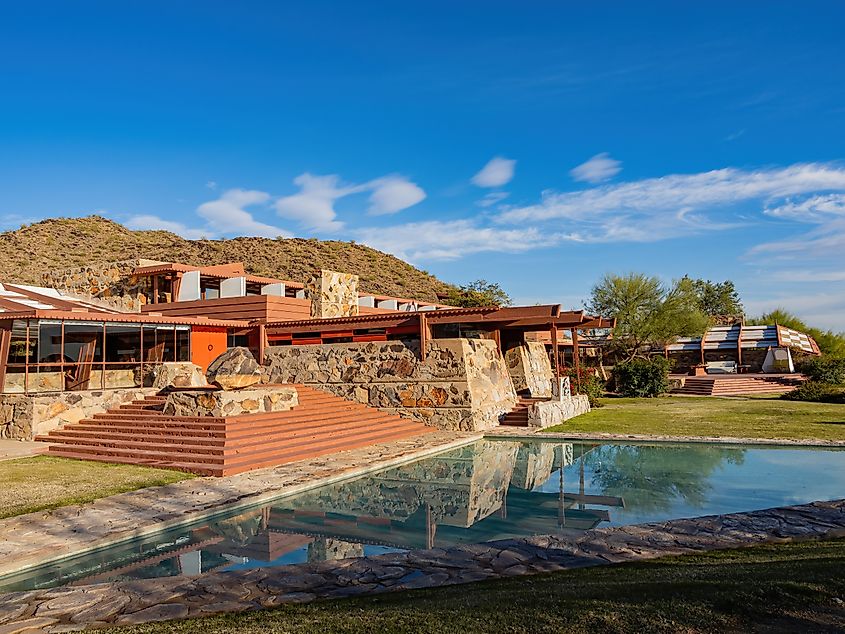
Taliesin West, set in the desert foothills of the McDowell Mountains in Scottsdale, is both a World Heritage Site and a National Historic Landmark. Built in 1937 as Frank Lloyd Wright’s winter home and desert studio, it reflects his vision of harmony between architecture and nature. Crafted by Wright and his apprentices using local stone and desert masonry, the complex embodies his most personal work. With its low-slung walls, natural motifs, and dramatic desert backdrop, the site conveys a sense of timeless grandeur.
The property served as Wright’s base until his passing in 1959 and continues today as the headquarters of the Frank Lloyd Wright Foundation. Visitors can tour courtyards, performance spaces, the drafting room, and Wright’s residence, all arranged on a striking geometric grid. Taliesin West remains a living monument to America’s most celebrated architect and his enduring influence on design.
Monument Valley Navajo Tribal Park
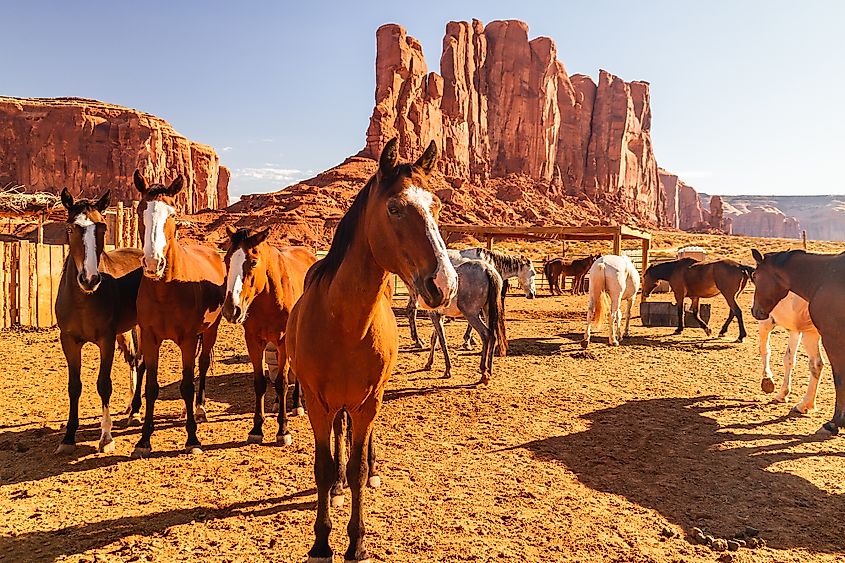
Monument Valley Navajo Tribal Park is one of the most iconic landscapes in the American Southwest, celebrated for its towering sandstone formations that rise 400 to 1,000 feet above the desert floor. Shifting light and drifting clouds cast dramatic shadows across the valley, creating ever-changing views that have inspired photographers, filmmakers, and travelers from around the world. With vast mesas, buttes, and wind-shaped sands blending into vibrant desert colors, the valley captures the spirit of the Navajo Nation’s homeland.
Visitors can explore the scenic loop road, where local artisans offer handcrafted jewelry and keepsakes, adding cultural depth to the experience. The park’s busiest season runs from May through September, when long waits and unpredictable weather are common. Travelers are encouraged to follow posted routes, remain hydrated, and respect the land.
Hoover Dam
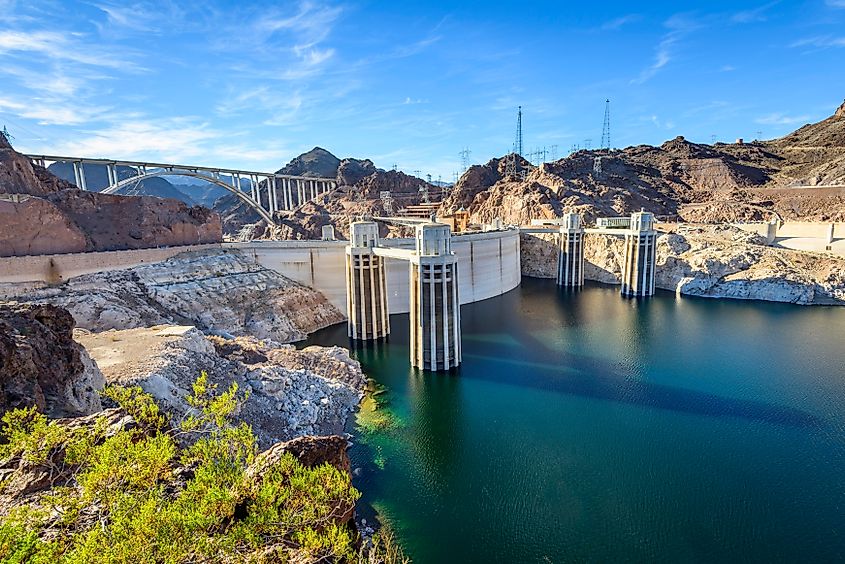
Hoover Dam, once called Boulder Dam, is a monumental concrete arch-gravity structure spanning the Black Canyon of the Colorado River on the Arizona-Nevada border. Built between 1931 and 1936 during the Great Depression, it was dedicated by President Franklin D. Roosevelt and later renamed by Congress in honor of Herbert Hoover. Its construction required thousands of workers, claimed more than 100 lives, and introduced new engineering methods to handle unprecedented challenges.
The dam impounds Lake Mead, one of the nation’s largest reservoirs, and supplies water and hydroelectric power to Nevada, Arizona, and California. Nearby Boulder City was originally created to house the workforce, and today the site attracts more than 7 million visitors each year. With a visitor center, paid parking, guided tours, and views of the bypass bridge, Hoover Dam remains a symbol of American ingenuity and a vital resource for the Southwest.
Sedona Red Rocks
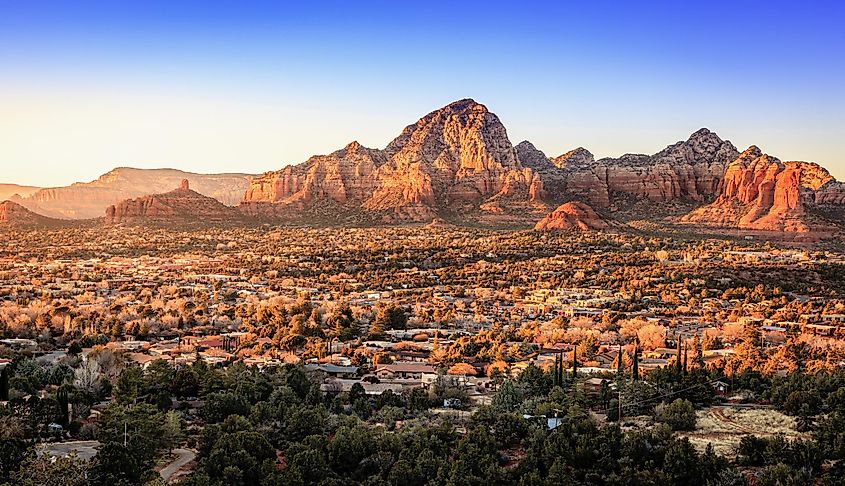
Red Rock State Park, located just outside Sedona, showcases a striking red sandstone canyon while protecting the riparian habitat along Oak Creek. This day-use park serves as both an educational center and a natural refuge, with its mission focused on conservation and learning. The 1.4-mile stretch of Oak Creek supports rare native fish, frogs, and the Sonora mud turtle (Kinosternon sonoriense), while the surrounding landscapes feature Fremont cottonwood, sycamore, juniper, and mesquite. Bird enthusiasts flock here to spot species such as the common black hawk and merganser, and sightings of mule deer, coyote, or river otter add to the park’s appeal.
Once part of Smoke Trail Ranch, the land was later transformed into a state park through a unique exchange supported by then-Governor Bruce Babbitt. Dedicated in 1991, it now offers trails, a visitor center, interpretive exhibits, and spaces for weddings or private gatherings, making it both a natural sanctuary and cultural treasure.
Saguaro National Park
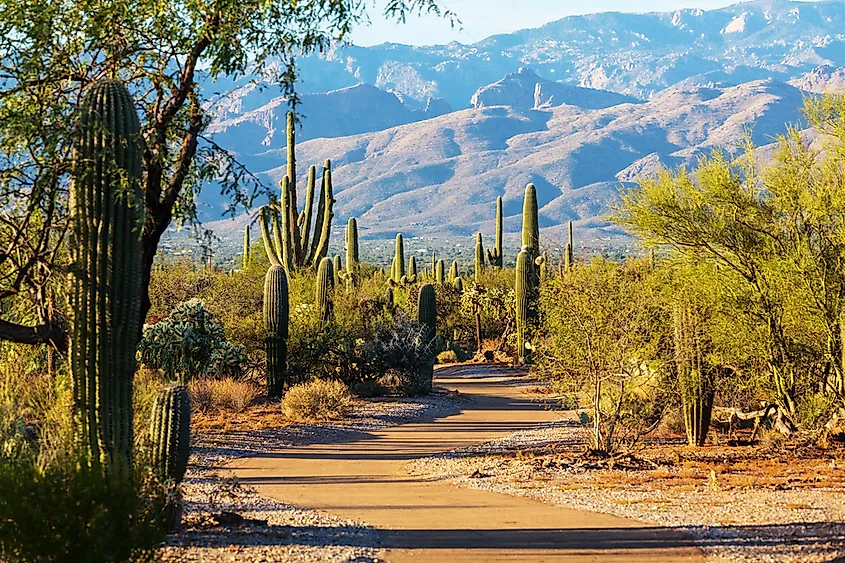
Saguaro National Park spans more than 91,000 acres across the Tucson and Rincon Mountains, preserving a desert wonderland filled with towering saguaros. Over two million of these iconic cacti dominate the landscape, some reaching 45 feet tall and living up to two centuries. Beyond these giants, the park is home to over 25 cactus species, along with creosote bush, prickly pear, barrel cactus, and cholla. Wildlife thrives here too; roadrunners, javelinas, Gila monsters, bobcats, and mountain lions roam the desert, while cooler elevations in the east harbor black bears, white-tailed deer, and Mexican spotted owls.
Visitors find year-round adventure, although October through April offers the most pleasant conditions. Spring brings vibrant wildflowers, while petroglyphs carved over 1,500 years ago reveal the region’s cultural history. Trails range from easy walks to rugged backcountry routes, rewarding hikers with sweeping views and brilliant sunsets.
Arizona’s Spirit in Seven Stops
Arizona’s treasures reveal a state shaped by timeless beauty, cultural depth, and natural wonder. From the sheer immensity of the Grand Canyon and the sculpted corridors of Antelope Canyon to the architectural legacy of Taliesin West and the sacred lands of Monument Valley, each site offers a journey unlike any other. Add to that the engineering marvel of Hoover Dam, the vivid landscapes of Sedona, and the cactus-studded horizons of Saguaro National Park, and you have a destination that inspires awe at every turn.
